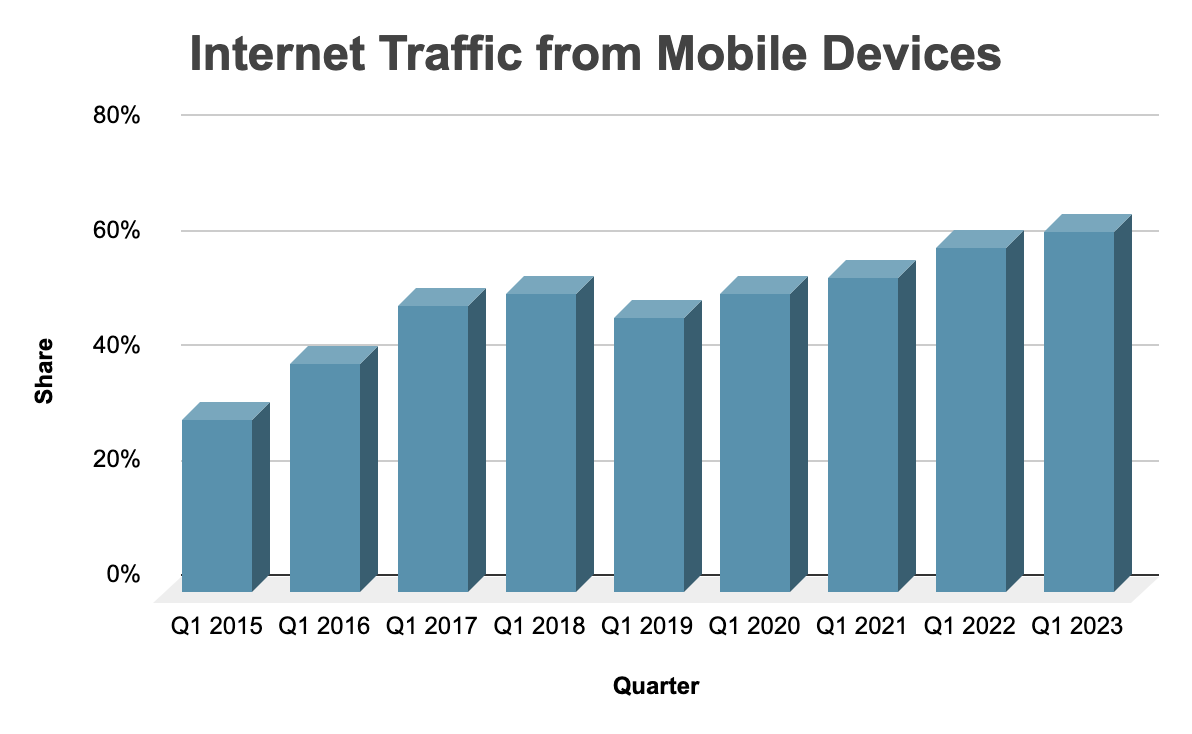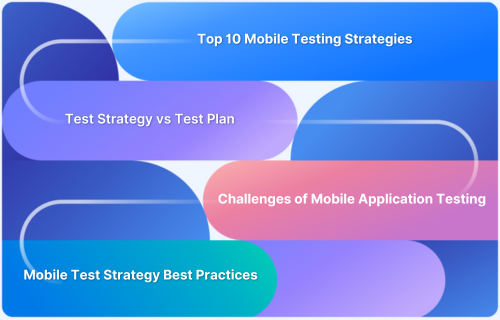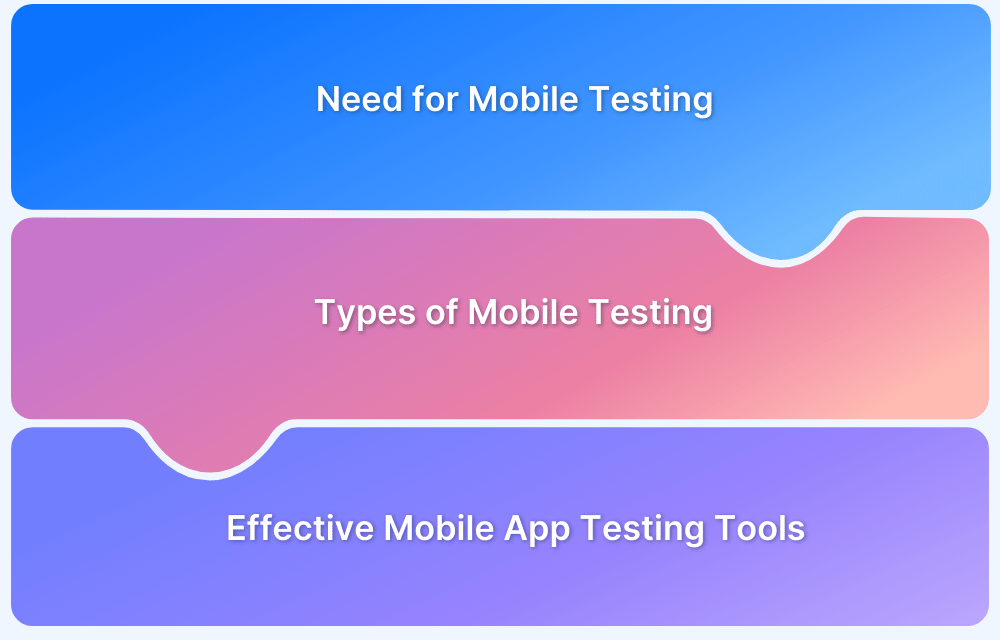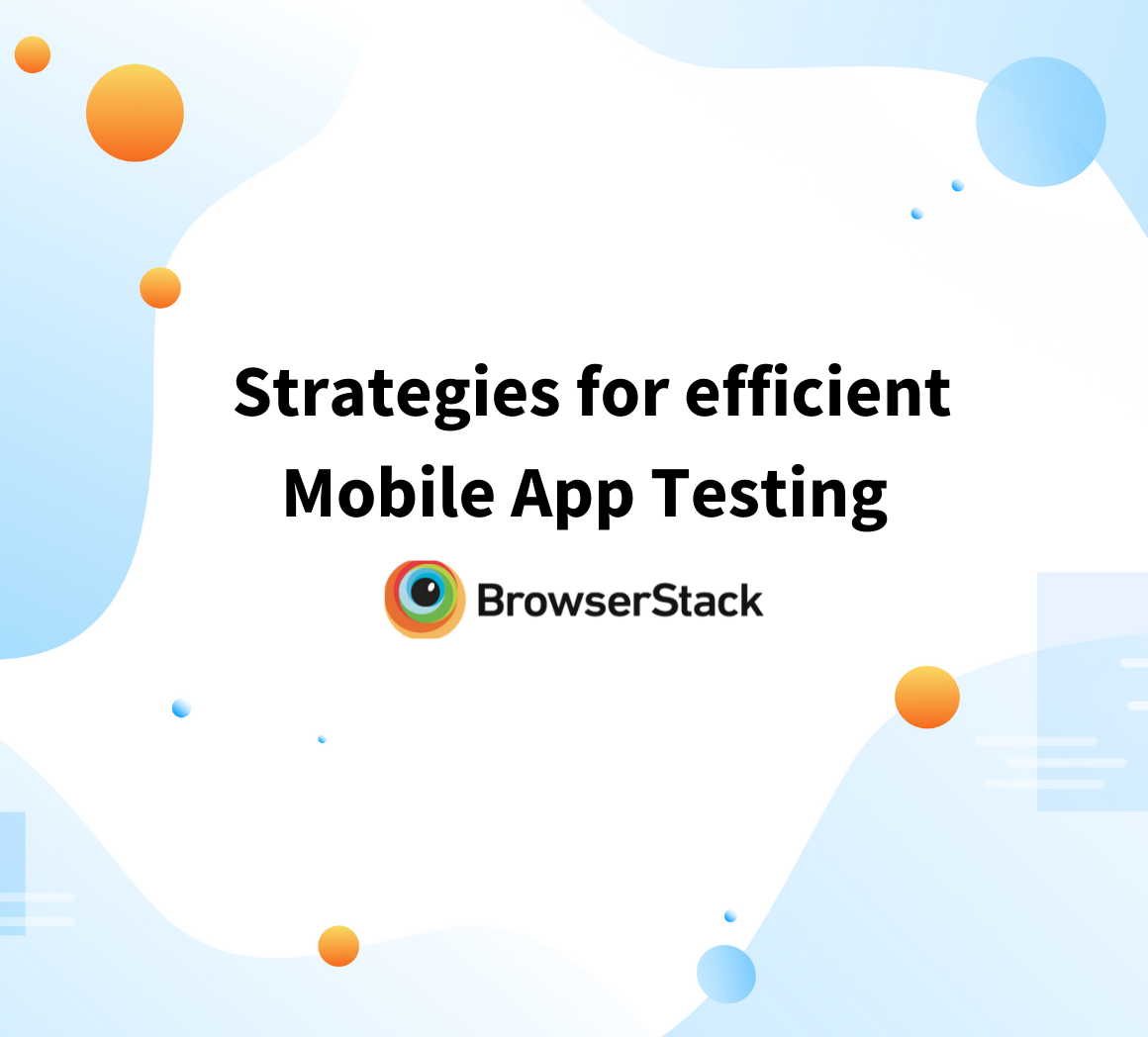Real-world Mobile Testing Strategies: Journey to Delivering High-Quality Apps
Siddhant Wadhwani, BrowserStack Champion - July 13, 2023
In today’s digital age, mobile devices have become indispensable to our daily routines, serving as our go-to solution for a wide range of needs. Consequently, companies worldwide invest significantly in developing mobile apps that provide customers with a better user experience and enhance engagement.
However, creating high-quality mobile applications that cater to the ever-evolving needs of the end users is no mean feat. That is why implementing effective testing strategies has become a critical component in the software development life cycle for delivering quality software.
According to a recent article, as mobile usage continues to escalate, it is estimated that by 2023, there will be over 7.33 billion mobile phone users worldwide, with most of them using their mobile devices to access the internet. Mobile users account for 60.9% of website traffic, and a whopping 92.1% of internet users access the web through their mobile phones. Moreover, with the advent of 5G technology, by 2025, there will be over 1 billion 5G connections globally, further increasing the significance of mobile devices in our lives.

Given my vast expertise in Software Testing, I have had the privilege to work with numerous companies across multiple domains, viz, E-commerce, Cloud-based SaaS platforms, and Business Intelligence and Web presence solutions, conducting mobile application testing and gathering invaluable insights into mobile testing strategies. My team has implemented industry-wide best practices to ensure the delivery of mobile applications that fulfill client requirements and offer an exceptional user experience.
In this article, I will share my professional experiences as a Software Test Professional as we delve into real-world mobile testing strategies, exploring the different approaches, methodologies, and tools that can be employed to ensure the successful delivery of high-quality mobile applications. Moreover, we will analyze various testing methods commonly used in the industry and explore how each method contributes to delivering high-quality software applications.
Mobile Testing and its Challenges
Mobile Testing is a software testing technique that evaluates mobile and desktop applications’ quality and functionality across different mobile devices, platforms, and networks. It involves testing the application’s performance, usability, security, compatibility, and other critical parameters that ensure an optimal user experience.
However, mobile testing poses unique challenges that are only sometimes encountered in traditional software testing. These include:
- Variety of devices, platforms, and screen sizes on the market
- Differences in network connectivity and bandwidth
- The complexity of mobile operating systems
- Different environmental conditions, such as varying temperatures, lighting, and noise levels.
Overcome Challenges in Mobile Testing
Companies must have a comprehensive mobile testing strategy to overcome these challenges and ensure the successful delivery of high-quality mobile applications. A mobile testing strategy is a plan that outlines the testing approach, methodologies, tools, and resources required to test mobile applications effectively. A well-defined mobile testing strategy considers the unique challenges of mobile testing and ensures that the application functions optimally across various devices, platforms, and network conditions.
In today’s hyper-competitive digital landscape, companies must pay attention to mobile testing. With a mobile testing strategy, companies can avoid releasing applications prone to errors, crashes, and other usability issues. This can lead to negative user experiences, reduced customer loyalty, and lost revenue. Throughout my career, a few things helped me overcome these challenges.
Plan your Tests
- Creating comprehensive test plans and checklists ensures that all aspects of the app are thoroughly tested.
- Automation is essential to minimize manual testing time and swiftly identify issues, particularly for critical flows.
- Testing for diverse network conditions is crucial since users can access the app in various locations and network environments.
- Ensuring app security is imperative to safeguard user data and prevent data breaches.
Test Early and Often
- Test frequently on all possible device-OS combinations to catch bugs and issues early on.
- Early detection reduces costs and saves time.
- Prioritize UI/UX for an aesthetically appealing and user-friendly interface.
- Use real (physical) devices to test functionality and compatibility.
Collaboration
- Collaboration with developers and designers is indispensable in testing to identify issues early and make improvements.
- Keeping abreast of mobile technology trends is equally important to ensure the app is compatible with new devices and operating systems.
- Incorporating user feedback into testing is also vital in understanding how users interact with the app and identifying areas that require improvement.
Personal Experience and Learnings
My experience testing mobile applications was fraught with challenges. Without a dedicated testing team, we had to test on various mobile devices and OS with limited resources and budget. We collected user feedback and improved the application to enhance the overall user experience and increase customer satisfaction. In another project, disorganization and inefficiency caused breakdowns in the testing process, adversely affecting the user experience.
Despite these challenges, our efforts paid off, and we delivered high-quality mobile applications that met client requirements and provided a seamless user experience. Overcoming our challenges was no easy feat, but we persevered by continuously learning from our experiences. We honed our testing processes, paying particular attention to detecting issues early, which allowed us to make necessary improvements before the development process was too far along. Our teams also collaborated closely with clients to fully understand their requirements and ensure that the end product met their expectations. This approach enabled us to incorporate client feedback throughout the development process, resulting in high-quality mobile applications that provided a seamless user experience.
Over time, testing strategies have advanced, and mobile testing has dramatically improved with the help of automation and new technologies. However, even the best testing processes can have limitations, and it’s essential to remain open to feedback and be willing to make changes. By taking this approach, I have turned failures into successes and delivered better user experiences for my clients. In light of my experiences, I have some key takeaways to share about mobile testing, including an ideal mobile testing strategy template, best practices for testing and automating mobile apps, factors to consider, and recommended tools for mobile testing.
Takeaways
First, let’s discuss the ideal Mobile Testing Strategy (Template) I have formulated over time. This template serves as a guide for our mobile testing team, outlining the purpose, objectives, and scope of testing for your mobile app. We’ll cover key areas such as the test environment, test cases, test automation, performance and security testing, deployment and release, and monitoring and improvement.
Strategy Template
1. Introduction:
- A brief overview of the project & purpose of the testing strategy.
- Objectives of the testing process and expected outcomes.
2. Test Objectives:
- Identify the key functionalities to be tested.
- Determine the scope of testing.
- Specify the types of devices and operating systems to be used for testing.
- Define the testing environments (emulator, simulator, or real device testing).
For e.g., User login, product search, product purchase, and payment.
3. Test Plan:
- Outline the testing process, test cases, test data, and test automation strategy.
For e.g., Create test cases for each functionality with step-by-step instructions and expected outcomes.
4. Test Environment:
- Specify the requirements for setting up the test environment.
- Identify the tools and resources needed for testing.
For, e.g., a List of devices and operating systems, testing tools, and Access to the eCommerce website.
5. Test Automation:
- Utilize automated testing tools to reduce the time and effort required for testing.
- Integrate the tools with the development and testing processes.
For e.g., Automation tools such as Appium or Selenium, integration with CI/CD pipelines, BrowserStack, etc.
6. Performance Testing:
- Test for performance under various conditions, including low battery and network connectivity.
- Monitor key performance metrics such as response time, crash rates, and memory usage.
E.g., Utilize Mobile Application Performance Management (MAPM) tools to track performance.
7. Security Testing:
- Ensure sensitive data is protected, and the application is secure from potential threats.
- Perform security testing for each functionality.
E.g., Use security testing tools such as OWASP ZAP to identify vulnerabilities.
8. Continuous Improvement:
- Continuously monitor and improve the testing process.
- Regularly review test results and feedback from users.
- Optimize the automation strategy.
E.g., Regular performance monitoring and feedback analysis.
9. Conclusion:
- Summarize the key takeaways and lessons learned from the testing process.
- Identify areas for improvement and future considerations.
This template provides a comprehensive guide for your mobile testing strategy and can be tailored to your needs. It includes details on the types of devices to be tested, operating systems, test environment, and tools for test automation. Additionally, the template covers performance and security testing objectives, deployment and release processes, and feedback mechanisms for continuous improvement. By following this template, your mobile testing team can achieve the best possible results while ensuring a seamless user experience for your customers.
Above all, to deliver high-quality mobile applications, there are several best practices to follow when testing and automating. Defining testing objectives, creating a test plan, and testing on real devices is important. Automated testing tools and robust test cases can save time and effort. Performance and security testing are crucial, as are using CI/CD pipelines and cloud-based testing solutions. Additionally, continuous monitoring and improvement using Mobile Application Performance Management tools will ensure your app performs at its best.
When testing mobile apps, you must consider device and operating system compatibility, screen size, resolution, orientation, hardware buttons, touch gestures, network speed, stability, security, availability, user interface, navigation, text clarity, loading times, error messages, response time, data usage, battery consumption, memory utilization, data encryption, secure connections, and protection against hacking and malware.
Tools such as Appium, Selendroid, Experitest, LoadRunner, Apache JMeter, K6, Locust, OWASP ZAP, Fortify, BrowserStack, Sauce Labs, Jenkins, Travis CI, CircleCI, Bitbucket Pipelines, and GitHub Actions can help. However, the specific tool(s) to use depends on the mobile application’s requirements and the organization.
To stay ahead in the game, organizations must have a robust mobile testing strategy in place. By considering device and OS compatibility, network and connectivity, user experience, performance & load testing, security, compatibility with other devices and software, automated testing, and continuous integration and deployment, they can deliver high-quality software applications that meet customer needs.



